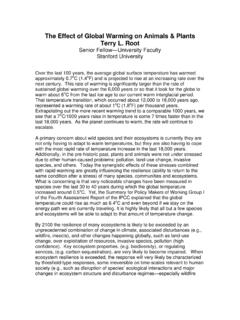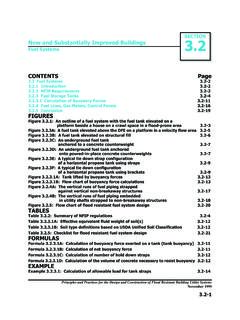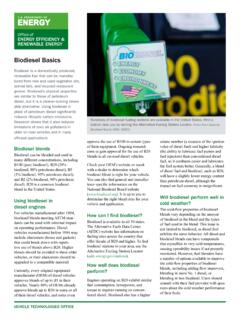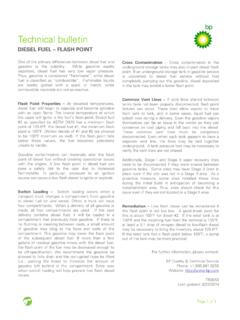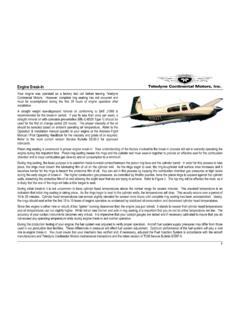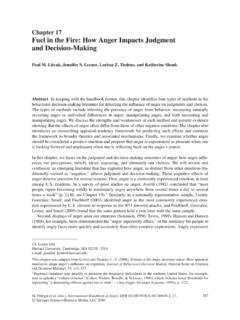Transcription of Fossil Fuel Subsidies: A Closer Look at Tax Breaks and ...
1 1 Fossil fuel subsidies : A Closer look at Tax Breaks and Societal Costs July 2019 There is a long history of government intervention in energy markets. Numerous energy subsidies exist in the tax code to promote or subsidize the production of cheap and abundant Fossil energy. Some of these subsidies have been around for a century, and while the United States has enjoyed unparalleled economic growth over the past 100 years thanks in no small part to cheap energy in many cases, the circumstances relevant at the time subsidies were implemented no longer exist. Today, the domestic Fossil fuel industries (namely, coal, oil and natural gas) are mature and generally highly profitable. Additionally, numerous clean and renewable alternatives exist, which have become increasingly price-competitive with traditional Fossil fuels. The 116th Congress is weighing potential policy mechanisms to reduce the impact of climate change and cap global warming to an internationally agreed upon target of no more than 2 degrees Celsius ( degrees Fahrenheit).
2 As a result, Fossil fuel tax subsidies , as well as other mechanisms of support, have received additional scrutiny from lawmakers and the public regarding their current suitability, scale and effectiveness. Indeed, the subsidies undermine policy goals of reducing greenhouse gas emissions from Fossil fuels. The United States provides a number of tax subsidies to the Fossil fuel industry as a means of encouraging domestic energy production. These include both direct subsidies to corporations, as well as other tax benefits to the Fossil fuel industry. Conservative estimates put direct subsidies to the Fossil fuel industry at roughly $20 billion per year; with 20 percent currently allocated to coal and 80 percent to natural gas and crude European Union subsidies are estimated to total 55 billion euros Historically, subsidies granted to the Fossil fuel industry were designed to lower the cost of Fossil fuel production and incentivize new domestic energy Today, taxpayer dollars continue to fund many Fossil fuel subsidies that are outdated, but remain embedded within the tax code.
3 At a time when renewable energy technology is increasingly cost-competitive with Fossil power generation, and a coordinated strategy must be developed to mitigate climate change, the broader utility of Fossil fuel subsidies is being questioned. There are many kinds of costs associated with Fossil fuel use in the form of greenhouse gas emissions and other pollution resulting from the extraction and burning of Fossil fuels. These negative externalities have adverse environmental, climate, and public health impacts, and are estimated to have totaled $ trillion globally in 2015 A recent analysis published in Nature Energy found that continuing current Fossil fuel subsidies would make it profitable to extract half of all domestic oil reserves. This could increase oil production by 17 billion barrels over the next few decades and emit an additional 6 billion tons of carbon dioxide.
4 2 Subsidizing an industry with such large, negative impacts is difficult to justify. Public subsidies should be consistent with an overarching, coordinated, and coherent energy policy that not only considers the supply of affordable, reliable power, but also public health impacts, climate change, and environmental degradation. While both Democratic and Republican administrations and lawmakers have discussed repealing Fossil fuel subsidies , no significant action has been taken to-date. Several international institutions, including the G20,5 the International Energy Agency,6 and the Organization of Economic Cooperation and Development (OECD),7 have called for the phase-out of Fossil fuel subsidies . The European Union has also called for such a phase-out but has not yet taken concrete actions. But rather than being phased out, Fossil fuel subsidies are actually increasing.
5 The latest International Monetary Fund (IMF) report estimates percent of global GDP ($ trillion) was spent on Fossil fuel subsidies in 2017, a half trillion dollar increase since 2015. The largest subsidizers are China ($ trillion in 2015), the United States ($649 billion) and Russia ($551 billion).8 According to the IMF, " Fossil fuels account for 85 percent of all global subsidies ," and reducing these subsidies "would have lowered global carbon emissions by 28 percent and Fossil fuel air pollution deaths by 46 percent, and increased government revenue by percent of GDP."9 An Overseas Development Institute study found that subsidies for coal-fired power increased almost three-fold, to $ billion per year, from 2014 to Tax subsidies to the Fossil fuel Industry The federal government provides numerous subsidies , both direct and indirect, to the Fossil fuel industry.
6 Special provisions in the tax code designed to specifically support and reward domestic Fossil fuel related production are direct subsidies . Other provisions in the tax code aimed at businesses in general create indirect subsidies that are not exclusive to the Fossil fuels industry. In certain cases, quantifying these subsidies is fairly simple. In the case of indirect subsidies , establishing an amount associated with these subsidies is more challenging. While not covered in this fact sheet, another source of federal aid to the Fossil fuel industry is the discounted cost of leasing federal lands for Fossil fuel extraction. Some Fossil fuel subsidies provide public assistance, such as the Low Income Home Energy Assistance Program (LIHEAP), which assists low-income households with heating costs. In May 2019, the UN Environment Programme (UNEP) published a report detailing an internationally accepted methodology that will help countries make their Fossil fuel subsidies more Direct Subsidies_ Intangible Drilling Costs Deduction (26 Code 263.)
7 Active). This provision allows companies to deduct a majority of the costs incurred from drilling new wells domestically. In its analysis of President Trump s Fiscal Year 2017 Budget Proposal, the Joint Committee on Taxation (JCT) estimated that eliminating tax Breaks for intangible drilling costs would generate $ billion in revenue in 2017, or $13 billion in the next ten Percentage Depletion (26 Code 613. Active). Depletion is an accounting method that works much like depreciation, allowing businesses to deduct a certain amount from their taxable income as a reflection of declining production from a reserve over time. However, with standard cost depletion, if a firm were to extract 10 percent of recoverable oil from a property, the depletion expense would be ten percent of capital costs. In contrast, percentage depletion allows firms to deduct a set percentage from their taxable income.
8 Because percentage depletion is not based on capital costs, total deductions can exceed capital costs. This provision is limited to 3 independent producers and royalty owners. In its analysis of the President s Fiscal Year 2017 Budget Proposal, the JCT estimated that eliminating percentage depletion for coal, oil and natural gas would generate $ billion in the next ten Credit for Clean Coal Investment Internal Revenue Code 48A (Active) and 48B (Inactive). These subsidies create a series of tax credits for energy investments, particularly for coal. In 2005, Congress authorized $ billion in credits for integrated gasification combined cycle properties, with $800 million of this amount reserved specifically for coal projects. In 2008, additional incentives for carbon sequestration were added to IRC 48B and 48A. These included 30 percent investment credits, which were made available for gasification projects that sequester 75 percent of carbon emissions, as well as advanced coal projects that sequester 65 percent of carbon Eliminating credits for investment in these projects would save $1 billion between 2017 and Nonconventional Fuels Tax Credit (Internal Revenue Code 45.)
9 Inactive). Sunsetted in 2014, this tax credit was created by the Crude Oil Windfall Profit Tax Act of 1980 to promote domestic energy production and reduce dependence on foreign oil. Although amendments to the act limited the list of qualifying fuel sources, this credit provided $ billion to the coal industry from Indirect Subsidies_ Last In, First Out Accounting (26 Code 472. Active). The Last In, First Out accounting method (LIFO) allows oil and gas companies to sell the fuel most recently added to their reserves first, as opposed to selling older reserves first under the traditional First In, First Out (FIFO) method. This allows the most expensive reserves to be sold first, reducing the value of their inventory for taxation purposes. Foreign Tax Credit (26 Code 901. Active). Typically, when firms operating in foreign countries pay royalties abroad they can deduct these expenses from their taxable income.
10 Instead of claiming royalty payments as deductions, oil and gas companies are able to treat them as fully deductible foreign income tax. In 2016, the JCT estimated that closing this loophole for all American businesses operating in countries that do not tax corporate income would generate $ billion in tax revenue over the course of the following Master Limited Partnerships (Internal Revenue Code 7704. Indirect. Active). Many oil and gas companies are structured as Master Limited Partnerships (MLPs). This structure combines the investment advantages of publicly traded corporations with the tax benefits of partnerships. While shareholders still pay personal income tax, the MLP itself is exempt from corporate income taxes. More than three-quarters of MLPs are Fossil fuel This provision is not available to renewable energy companies. Domestic Manufacturing Deduction (IRC 199.)

